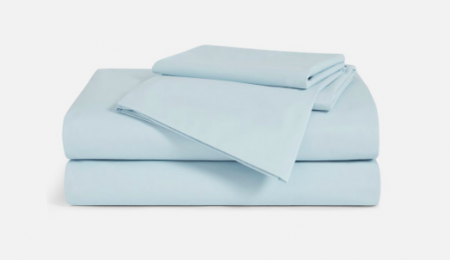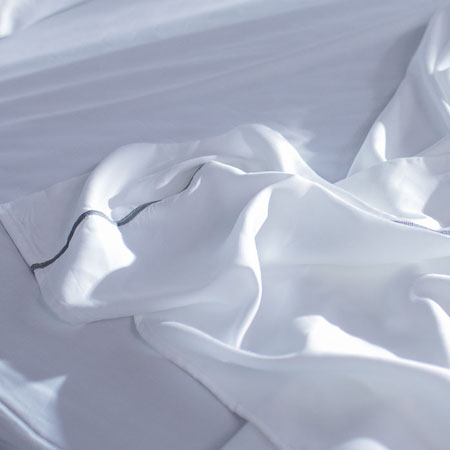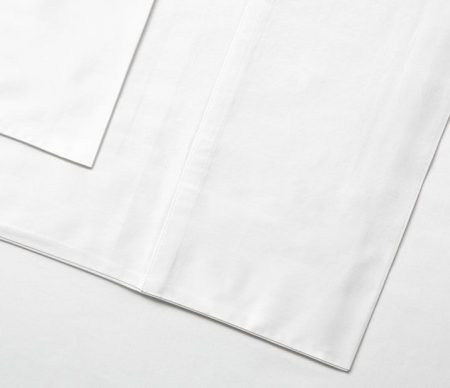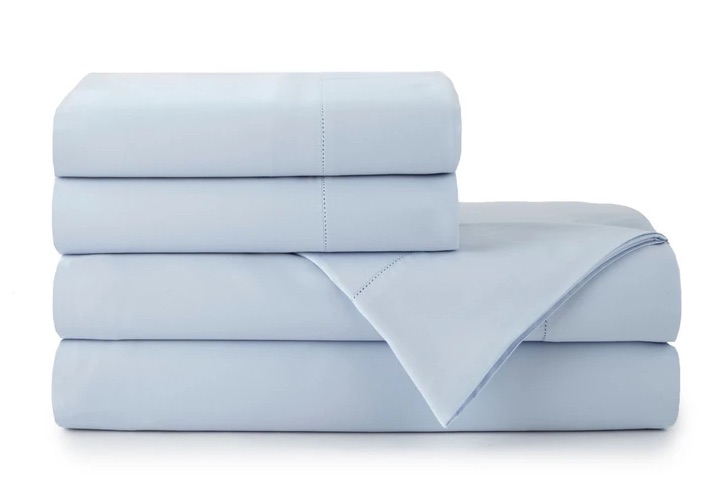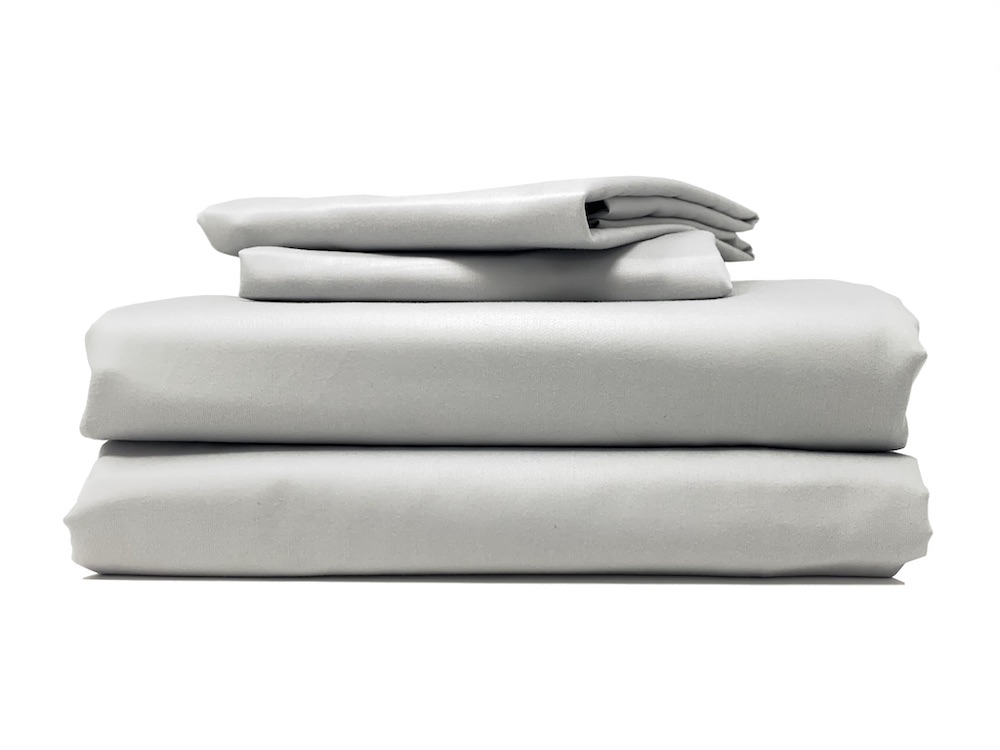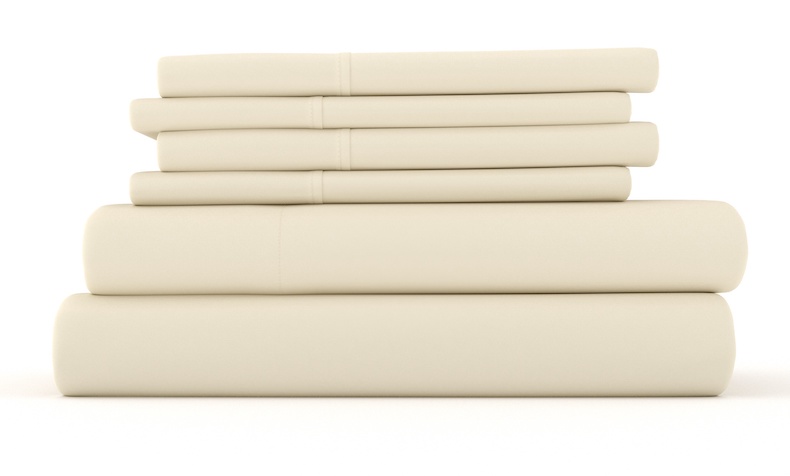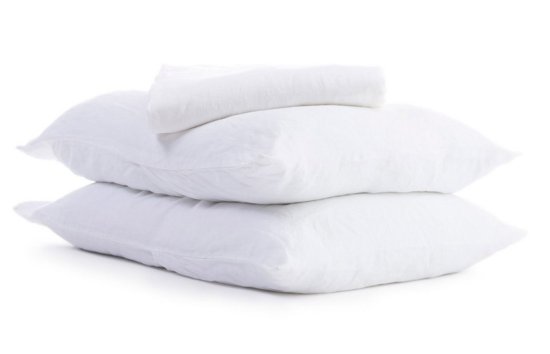Buying Guide – Shopping for the Best Bed Sheets
Bed sheets are a sleep accessory that’s often chosen solely based on looks, price, or convenience. But it’s a very important component in a good night’s sleep, so you should look beyond the obvious when shopping for sheets for your sleep sanctuary.
Consider how the sheets feel on your skin, regulate temperature and moisture, whether they’re all-natural, organic, or synthetic, and how they may benefit (or detract from) your sleep experience. This guide looks at factors to consider when shopping for sheets.
How to Choose the Right Sheets for Your Bed
Bed Sheet material
The type of fabric is a top consideration. Here’s a look at the common fabrics, how they feel, and the appeal of each.
Egyptian Cotton
This cotton is strong and soft with extra-long fibers and is considered a luxury fabric. The cotton is only grown in Egypt and is highly breathable, doesn’t pill, and is known for durability. These sheets are usually costlier but are an investment that can pay off in excellent sleep. Egyptian cotton is a top choice for all seasons since it’s breathable and natural.
Cotton Blend
These sheets are part cotton. The secondary component can be synthetic or natural. There are poly-cotton blend sheets that are wrinkle resistant, quite affordable, and more durable than pure cotton sheets. Cotton-linen blend sheets are another excellent option but are prone to wrinkling. Blends are a top choice as they offer the benefits of multiple materials.
Polyester
Made from a synthetic fiber, polyester sheets are great because they are durable, stain and moisture-resistant. They are also easy-care and don’t wrinkle, so they come out of the dryer looking perfect. Polyester is the most affordable bed sheet material, and if you look to high-quality brands, they perform well as part of a comfortable bedding set.
Jersey Knit
This type of bed sheet differs from others because the fabric is not woven (fibers overlaid into a grid) but are knit which means it’s one long piece of thread. Knit fabrics stretch in all directions making them soft and flexible. Jersey is warm, stretchy, and feels like a comfortable t-shirt type fabric for comfy sleep.
Bamboo
The fibers of the bamboo plant are made into a soft pulp and then dried into threads and woven into fabric for sheets. Well-constructed bamboo sheets retain the same properties as the plant including anti-microbial and hypoallergenic. Bamboo is thermo-regulating, soft, silky, and has a plush sensation because of its long threads.
Flannel
This type of sheet can be made of cotton, wool, or synthetic fibers and is knit loosely to create dense high-pile softness. For cold sleepers, it’s a good choice year-round and for others, a toasty choice for winter months. Flannel quality is determined by weight as is jersey knit. Look for high-quality that won’t pill.
Microfiber
Synthetics like nylon and polyester polymers are used to create microfiber sheets. They are ultra-thin, made of microscopic strands thinner than a single strand of silk. They are water and stain resistant. Although they’re thin, they are also very durable, strong, and so smooth they almost feel slippery. If your skin is sensitive, this might be a good choice.
Linen
A luxurious sheet option, linen bedding is made from all-natural fibers from the flax plant that are breathable and absorb and wick moisture. Linen strands don’t weave as tightly as other fibers. Linen sheets are exceptional for keeping you cool by permitting air flow and keeping moisture off your body because the fibers are hollow.
Silk
One of the costliest sheet fabrics, silk is luxurious and healthy. Silk sheets drape comfortably, wick moisture in summer and warm you in winter. If you have asthma or allergies, silk sheets are great as they repel dust mites, mildew, mold, and are naturally hypoallergenic. They’re also durable, long lasting, and offer a sensational hug not found in other sheets.
Fit
Proper fit is a prime concern when choosing bed sheets. Waking with a fitted sheet that came loose and bunched is uncomfortable. You want sheets deep enough to fit, but not overly deep if you have a low-profile sleep surface. Too narrow or too deep are both incompatible.
If you have a thick mattress, you’ll need extra-deep pockets. Size is obvious, but not all brands come in California King or Twin XL which are less common mattress sizes. Another concern is elastic. Some fitted sheets have them only at the corners, but all-around elastic keeps it more secure.
Weave
Weave refers to how the thread is made into fabric. Each weave has a different texture that can affect your sleep experience.
- Percale – A tight weave that feels smooth, it’s breathable and has no sheen. However, percale can wrinkle.
- Sateen – This luxury weave is dense, satiny, and has a nice look and feel. It drapes nicely and is wrinkle-resistant.
- Twill – It’s a diagonal weave that has more texture to the touch and visibly. It’s durable and drapes well.
- Flannel – Brushing the weave makes it ultra-soft to the touch, and it’s plusher than other weaves for ultimate comfort.
Color/Pattern
How the sheets benefit your sleep preference and quality of rest should be the top factor, but aesthetics also matter. Color and pattern are subjective, of course, but if you’re sensitive to dyes, you might want to look to all-natural neutral-colored products that don’t use chemical dyes. Sheets need not match your comforter or duvet. They can be contrasting or complementary colors or patterns.
When decorating your sleep space and choosing bed colors, remember that your goal is good sleep. Dark wall colors and high contrast décor draw the eye and stimulate the mind. That could interfere with your rest. Consider going with neutrals in a low-contrast palette for optimal rest. Everything need not match but keeping the color choices subtle can calm your mind and benefit your sleep.
The Best Thread Count for Sheets
What is thread count?
Thread count is not the end-all when it comes to choosing the best sheets for you. Here’s what you need to know. Thread count is the number of lengthwise and crosswise yarns within a 1” square section of the fabric. A thread count of 250 means there’s 125 strands lengthwise and 125 crosswise.
What’s The Best Thread Count for Each Sheet Type?
What’s the best thread count for each sheet type?
- Egyptian Cotton: 300-400 count
- Supima Cotton: 200-400 count
- Percale: 250-300 count
- Sateen: 300-600 count
- Bamboo: 300 or higher count
- Linen: 100-200 count
Some sheets aren’t gauged by thread count – weight is the indicator of quality
- Silk: 14-19-pound weight
- Jersey: 10+ ounces per yard
- Flannel: 5+ ounces or 170+ GSM (grams per square meter)
- Microfiber: 90-120 GSM (grams per square meter)
Higher thread count doesn’t necessarily indicate quality
Manufacturers might try and push their thread counts higher for an edge in marketing, but it doesn’t mean the sheets are better than lower thread count products. Here’s the truth:
- If the yarn is multi-ply, the manufacturer might count each strand boosting thread count artificially.
- Some manufacturers add filler yarn to boost thread count artificially.
- Tight weave makes thread count higher but fabric is prone to tearing and break down.
- Some materials aren’t suited to high thread count and will perform worse the higher the count.
- Thread counts higher than 600 are likely boosted by some marketing tactic.
What Else Should You Consider When Buying Sheets?
Ultimately, bed sheet choice is about what gets you the best night’s sleep. In addition to style, choice of materials and thread count or weight, here are some additional considerations.
- Fiber content – Materials matter and fibers can be natural (cotton, linen, silk), synthetic (made from petrochemicals), artificial (Man-made from natural raw materials), or a blend. Each has a different feel and sleep experience.
- Set or individual pieces – Sheet sets commonly come with a fitted sheet, flat sheet, and 1-2 pillowcases, but some companies now offer a greater variety where you can buy just the fitted and then customize how many pillowcases you want.
- Organic or natural – Natural and organic sheets are silk, cotton, linen, or wool. Natural means that it’s from a component found in nature while organic means the raw materials grew without pesticides, synthetic fertilizer, or any GMOs.
- Return policy and sleep trial – If you’re not certain what you want, buying sheets that offer a sleep trial can ensure you get the best sleep experience for your needs. Also, check out the return policy, so you’ll know if the purchase is final or not.
